Keynote Speakers
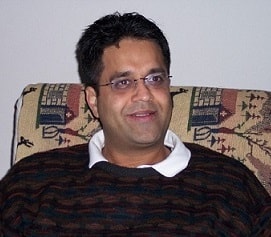
Inderjit S Dhillon
Gottesman Family Centennial Professor
University of Texas at Austin
Department of Computer Science
Austin, TX, USA
Gottesman Family Centennial Professor
University of Texas at Austin
Department of Computer Science
Austin, TX, USA
He is an ACM Fellow, IEEE Fellow, SIAM Fellow, AAAS Fellow and has won the SIAM Linear Algebra Prize. His research interests are in machine learning, large-scale data analysis and bioinformatics. His emphasis is on developing novel algorithms that respect the underlying problem structure and are scalable to massive data sets. Some of his current research topics: high-dimensional data analysis, divide-and-conquer methods for big data analytics, social network analysis, and predicting gene-disease associations.
Title of Talk
Stabilizing Gradients for Deep Neural Networks
Vanishing and exploding gradients are two of the main obstacles in training deep neural networks, especially in capturing long range dependencies in recurrent neural networks (RNNs). In this talk, we present an efficient parametrization of the transition matrix of an RNN that allows us to stabilize the gradients that arise in its training. Specifically, we parameterize the transition matrix by its singular value decomposition (SVD), which allows us to explicitly track and control its singular values. We attain efficiency by using tools that are common in numerical linear algebra, namely Householder reflectors for representing the orthogonal matrices that arise in the SVD. By explicitly controlling the singular values, our proposed svdRNN method allows us to easily solve the exploding gradient problem and we observe that it empirically solves the vanishing gradient issue to a large extent. We note that the SVD parameterization can be used for any rectangular weight matrix, hence it can be easily extended to any deep neural network, such as a multi-layer perceptron. Theoretically, we demonstrate that our parameterization does not lose any expressive power, and show how it potentially makes the optimization process easier. Our experimental results demonstrate that the proposed framework converges faster, and has better generalization, especially when the depth is large.
Title of Talk
Stabilizing Gradients for Deep Neural Networks
Vanishing and exploding gradients are two of the main obstacles in training deep neural networks, especially in capturing long range dependencies in recurrent neural networks (RNNs). In this talk, we present an efficient parametrization of the transition matrix of an RNN that allows us to stabilize the gradients that arise in its training. Specifically, we parameterize the transition matrix by its singular value decomposition (SVD), which allows us to explicitly track and control its singular values. We attain efficiency by using tools that are common in numerical linear algebra, namely Householder reflectors for representing the orthogonal matrices that arise in the SVD. By explicitly controlling the singular values, our proposed svdRNN method allows us to easily solve the exploding gradient problem and we observe that it empirically solves the vanishing gradient issue to a large extent. We note that the SVD parameterization can be used for any rectangular weight matrix, hence it can be easily extended to any deep neural network, such as a multi-layer perceptron. Theoretically, we demonstrate that our parameterization does not lose any expressive power, and show how it potentially makes the optimization process easier. Our experimental results demonstrate that the proposed framework converges faster, and has better generalization, especially when the depth is large.

David A. Bader
Professor and Chair,
School of Computational Science
and Computing Georgia Institute of Technology
Professor and Chair,
School of Computational Science
and Computing Georgia Institute of Technology
Brief Speaker Bio :
David A. Bader is Professor and Chair of the School of Computational Science and Engineering, College of Computing, at Georgia Institute of Technology. He is a Fellow of the IEEE and AAAS and served on the White House's National Strategic Computing Initiative (NSCI) panel. Dr. Bader serves as a board member of the Computing Research Association, on the NSF Advisory Committee on Cyberinfrastructure, on the Council on Competitiveness High Performance Computing Advisory Committee, on the IEEE Computer Society Board of Governors, and on the Steering Committees of the IPDPS and HiPC conferences. He is the editor-in-chief of IEEE Transactions on Parallel and Distributed Systems, and is a National Science Foundation CAREER Award recipient. Dr. Bader is a leading expert in data sciences. His interests are at the intersection of high-performance computing and real-world applications, including cybersecurity, massive-scale analytics, and computational genomics, and he has co-authored over 210 articles in peer-reviewed journals and conferences. During his career, Dr. Bader has served as PI/coPI of over US$179M of competitive awards with over US$41.1M of this brought into his institution. Dr. Bader has served as a lead scientist in several DARPA programs including High Productivity Computing Systems (HPCS) with IBM PERCS, Ubiquitous High Performance Computing (UHPC) with NVIDIA ECHELON, Anomaly Detection at Multiple Scales (ADAMS), Power Efficiency Revolution For Embedded Computing Technologies (PERFECT), and Hierarchical Identify Verify Exploit (HIVE). He has also served as Director of the Sony-Toshiba-IBM Center of Competence for the Cell Broadband Engine Processor. Bader is a co-founder of the Graph500 List for benchmarking "Big Data" computing platforms. Bader is recognized as a "RockStar" of High Performance Computing by InsideHPC and as HPCwire's People to Watch in 2012 and 2014. Dr. Bader also serves as an associate editor for several high impact publications including IEEE Transactions on Computers, ACM Transactions on Parallel Computing, and ACM Journal of Experimental Algorithmics. He successfully launched his school's Strategic Partnership Program in 2015, whose partners include Accenture, Booz Allen Hamilton, Cray, IBM, Keysight Technologies, LexisNexis, Northrop Grumman, NVIDIA, and Yahoo; as well as the National Security Agency, Sandia National Laboratories, Pacific Northwest National Laboratory, and Oak Ridge National Laboratory.
Title of Talk
Massive-scale streaming analytics
Emerging real-world graph problems include: detecting community structure in large social networks; improving the resilience of the electric power grid; and detecting and preventing disease in human populations. Unlike traditional applications in computational science and engineering, solving these problems at scale often raises new challenges because of the sparsity and lack of locality in the data, the need for additional research on scalable algorithms and development of frameworks for solving these problems on high performance computers, and the need for improved models that also capture the noise and bias inherent in the torrential data streams. In this talk, the speaker will discuss the opportunities and challenges in massive data-intensive computing for applications in computational science and engineering.
David A. Bader is Professor and Chair of the School of Computational Science and Engineering, College of Computing, at Georgia Institute of Technology. He is a Fellow of the IEEE and AAAS and served on the White House's National Strategic Computing Initiative (NSCI) panel. Dr. Bader serves as a board member of the Computing Research Association, on the NSF Advisory Committee on Cyberinfrastructure, on the Council on Competitiveness High Performance Computing Advisory Committee, on the IEEE Computer Society Board of Governors, and on the Steering Committees of the IPDPS and HiPC conferences. He is the editor-in-chief of IEEE Transactions on Parallel and Distributed Systems, and is a National Science Foundation CAREER Award recipient. Dr. Bader is a leading expert in data sciences. His interests are at the intersection of high-performance computing and real-world applications, including cybersecurity, massive-scale analytics, and computational genomics, and he has co-authored over 210 articles in peer-reviewed journals and conferences. During his career, Dr. Bader has served as PI/coPI of over US$179M of competitive awards with over US$41.1M of this brought into his institution. Dr. Bader has served as a lead scientist in several DARPA programs including High Productivity Computing Systems (HPCS) with IBM PERCS, Ubiquitous High Performance Computing (UHPC) with NVIDIA ECHELON, Anomaly Detection at Multiple Scales (ADAMS), Power Efficiency Revolution For Embedded Computing Technologies (PERFECT), and Hierarchical Identify Verify Exploit (HIVE). He has also served as Director of the Sony-Toshiba-IBM Center of Competence for the Cell Broadband Engine Processor. Bader is a co-founder of the Graph500 List for benchmarking "Big Data" computing platforms. Bader is recognized as a "RockStar" of High Performance Computing by InsideHPC and as HPCwire's People to Watch in 2012 and 2014. Dr. Bader also serves as an associate editor for several high impact publications including IEEE Transactions on Computers, ACM Transactions on Parallel Computing, and ACM Journal of Experimental Algorithmics. He successfully launched his school's Strategic Partnership Program in 2015, whose partners include Accenture, Booz Allen Hamilton, Cray, IBM, Keysight Technologies, LexisNexis, Northrop Grumman, NVIDIA, and Yahoo; as well as the National Security Agency, Sandia National Laboratories, Pacific Northwest National Laboratory, and Oak Ridge National Laboratory.
Title of Talk
Massive-scale streaming analytics
Emerging real-world graph problems include: detecting community structure in large social networks; improving the resilience of the electric power grid; and detecting and preventing disease in human populations. Unlike traditional applications in computational science and engineering, solving these problems at scale often raises new challenges because of the sparsity and lack of locality in the data, the need for additional research on scalable algorithms and development of frameworks for solving these problems on high performance computers, and the need for improved models that also capture the noise and bias inherent in the torrential data streams. In this talk, the speaker will discuss the opportunities and challenges in massive data-intensive computing for applications in computational science and engineering.
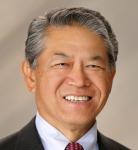
Roger U. Fujii
IEEE Computer Society President,
President of Fujii Systems
IEEE Computer Society President,
President of Fujii Systems
Brief Speaker Bio :
Roger Fujii is a senior industry executive and a long-term CS volunteer involved in many society functions. In publications, he served as Press Operations Committee Chair, recently Publications special committee member, and guest editor (Software). He served as conference program chair, VP Standards Board, 1012 IEEE Standard Working Group Chair, and US Chair of ISO/IEC International Standards. In 2011, he led the CS Strategic Plan development. He was CS First VP and Board of Governors member and served as IEEE Director (2012–2014 Board of Directors).
He is an IEEE Fellow, CS Golden Core member, and 2010 CIE Executive of the Year. He received Outstanding Contribution and Meritorious Service awards.
Fujii is President of Fujii Systems, specializing in executive services. As a Northrop Grumman VP (retired), he managed a $1.086B division developing F22/F35 communication systems. He lectured at UCLA and Sacramento State University, and is a guest professor at Xiamen University. He served on the National Academy of Sciences committee for Space Shuttle.
Fujii has a BS/MS in Electrical Engineering from the University of California, Berkeley, and studied business management at Harvard, UCLA, and Darden. He is a contributing author for two books and has presented numerous papers.
Roger Fujii is a senior industry executive and a long-term CS volunteer involved in many society functions. In publications, he served as Press Operations Committee Chair, recently Publications special committee member, and guest editor (Software). He served as conference program chair, VP Standards Board, 1012 IEEE Standard Working Group Chair, and US Chair of ISO/IEC International Standards. In 2011, he led the CS Strategic Plan development. He was CS First VP and Board of Governors member and served as IEEE Director (2012–2014 Board of Directors).
He is an IEEE Fellow, CS Golden Core member, and 2010 CIE Executive of the Year. He received Outstanding Contribution and Meritorious Service awards.
Fujii is President of Fujii Systems, specializing in executive services. As a Northrop Grumman VP (retired), he managed a $1.086B division developing F22/F35 communication systems. He lectured at UCLA and Sacramento State University, and is a guest professor at Xiamen University. He served on the National Academy of Sciences committee for Space Shuttle.
Fujii has a BS/MS in Electrical Engineering from the University of California, Berkeley, and studied business management at Harvard, UCLA, and Darden. He is a contributing author for two books and has presented numerous papers.
Invited Speakers
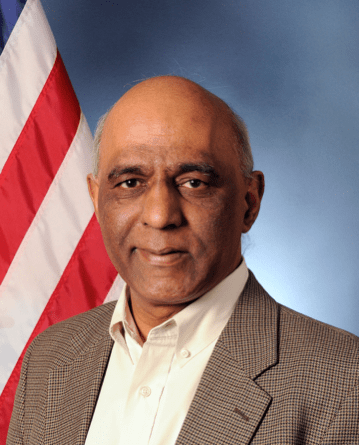
Guna Seetharaman
Senior Scientist ST for Advanced Computing Concepts
Current : U.S. Naval Research Laboratory
Previous : Air Force Research Laboratory, IEEE Mohawk Valley Section, Air Force Institute of Technology
Education : University of Miami
Senior Scientist ST for Advanced Computing Concepts
Current : U.S. Naval Research Laboratory
Previous : Air Force Research Laboratory, IEEE Mohawk Valley Section, Air Force Institute of Technology
Education : University of Miami
Guna Seetharaman is the Navy Senior Scientist (ST) for Advanced Computing
Concepts, and the Chief Scientist for Computation, Center for Computational Science,
Navy Research Lab. He leads a team effort on: Video Analytics, High performance
computing, low–latency, high-throughput, on-demand scalable geo-dispersed
computer-networks. He joined NRL in June 2015. He worked as Principal Engineer
at the Air Force Research Laboratory, Information Directorate, where he led
research and development in Video Exploitation, Wide Area Motion Imagery,
Computing Architectures and Cyber Security. He holds three US Patents, and has
filed more disclosures, in related areas. His team won the best algorithm award at
IEEE CVPR-2014 Video Change Detection challenge, featuring a semantic
segmentation of dynamic scene to detect change in the midst of dynamic clutters.
He served as a tenured professor at the Air Force Institute of Technology, and
University of Louisiana at Lafayette, before joining AFRL. He and his colleagues
cofounded Team CajubBot and successfully fielded two unmanned vehicles at the
DARPA Grand Challenges 2004, 2005 and 2007. He also co-edited a special issue of
IEEE COMPUTER dedicated to Unmanned Vehicles, and special issue of The
European Journal Embedded Systems focused on intelligent autonomous vehicles.
He was elected as Fellow of the IEEE, in 2014, for his contributions in high
performance computer vision algorithms for airborne applications. He also served
as the elected Chair of the IEEE Mohawk Valley Section, Region 1, FY 2013 and FY
2014.
Title of Talk
Computing Architectures for Machine Perception in the Post Deep-Learning World
We are in the middle of a surge in popularity, interest and investments in artificial intelligence and neural networks. Successful demonstration of ImageNet classification with deep convolutional neural networks (DCNN), has established the viability of robust image recognition system based on very large collection of labeled images, and powerful GPUS to train the DCNN, and execute the trained classifier on computing devices with modest computing capabilities. Typically the training takes place on a centralized computer, and classification takes place on computing device connected directly to the sensor, referred as computing at the edge. Elements of the analytical framework of image recognition include convolution, shift invariance, correlation and scaling by down-sampling are easier are essential to the pooling process critical for building deep neural networks. Similar abstractions for analyzing large collection of texts, and cyber forensic data, are yet to be well established. The computing capabilities required to build ubiquitous self-aware multimodal-sensor network will entail architectural innovations beyond GPGPUs. We will review the lessons learned in the realm of video analytics and automated text analytics over the past decades and also share insights towards promising new directions. Exciting new possibilities await us, enabled by the convergence of open-source software development tools, data- sharing tools, and innovatively packaged processors with high-bandwidth memory subsystems and highly scalable networked computing.
Title of Talk
Computing Architectures for Machine Perception in the Post Deep-Learning World
We are in the middle of a surge in popularity, interest and investments in artificial intelligence and neural networks. Successful demonstration of ImageNet classification with deep convolutional neural networks (DCNN), has established the viability of robust image recognition system based on very large collection of labeled images, and powerful GPUS to train the DCNN, and execute the trained classifier on computing devices with modest computing capabilities. Typically the training takes place on a centralized computer, and classification takes place on computing device connected directly to the sensor, referred as computing at the edge. Elements of the analytical framework of image recognition include convolution, shift invariance, correlation and scaling by down-sampling are easier are essential to the pooling process critical for building deep neural networks. Similar abstractions for analyzing large collection of texts, and cyber forensic data, are yet to be well established. The computing capabilities required to build ubiquitous self-aware multimodal-sensor network will entail architectural innovations beyond GPGPUs. We will review the lessons learned in the realm of video analytics and automated text analytics over the past decades and also share insights towards promising new directions. Exciting new possibilities await us, enabled by the convergence of open-source software development tools, data- sharing tools, and innovatively packaged processors with high-bandwidth memory subsystems and highly scalable networked computing.
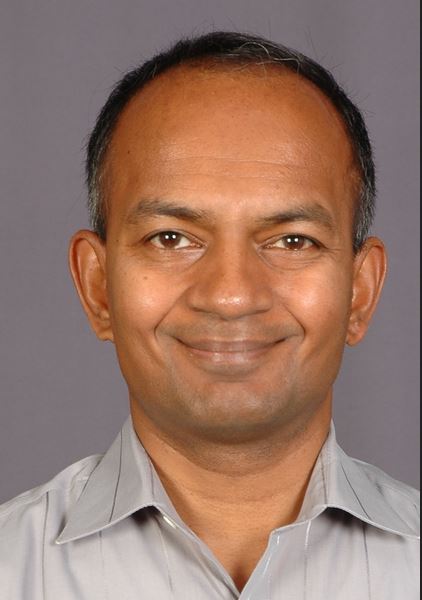
P. (Saday) Sadayappan
Professor
Department of Computer Science and Engineering
595 Dreese Lab, 2015 Neil Avenue
Ohio State University, Columbus, Ohio 43210 USA
Email:sadayappan.1_at_osu.edu
+1-614-292-0053 (office), +1-614-292-2911 (fax)
Professor
Department of Computer Science and Engineering
595 Dreese Lab, 2015 Neil Avenue
Ohio State University, Columbus, Ohio 43210 USA
Email:sadayappan.1_at_osu.edu
+1-614-292-0053 (office), +1-614-292-2911 (fax)
Brief Speaker Bio :
P. (Saday) Sadayappan is a Professor of Computer Science and Engineering at The Ohio State University. His research interests include compiler optimization for heterogeneous systems, domain/pattern-specific compiler optimization, characterization of data movement complexity of algorithms, and data-structure centric performance optimization. He obtained a Bachelors degree from IIT-Madras, and an M.S. and Ph.D. from Stony Brook University. He is a Fellow of the IEEE.
Title of Talk
GPU acceleration of data/graph analytics algorithms
GPUs have considerably higher peak performance than the most powerful multicore CPUs. While GPUs are now widely used for some computations like CNNs (Convolutional Neural Networks), there are challenges in achieving high GPU performance for many data/graph analytics computations. This talk will discuss these challenges and some approaches to addressing them.
Title of Talk
GPU acceleration of data/graph analytics algorithms
GPUs have considerably higher peak performance than the most powerful multicore CPUs. While GPUs are now widely used for some computations like CNNs (Convolutional Neural Networks), there are challenges in achieving high GPU performance for many data/graph analytics computations. This talk will discuss these challenges and some approaches to addressing them.
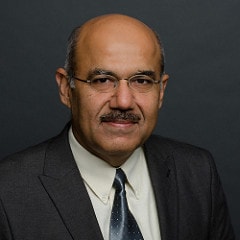
Chandrajit Bajaj
Computer Science, and Institute of Computational Engineering and Sciences,
Center for Computational Visualization,
The University of Texas - Austin
http://www.cs.utexas.edu/~bajaj
Computer Science, and Institute of Computational Engineering and Sciences,
Center for Computational Visualization,
The University of Texas - Austin
http://www.cs.utexas.edu/~bajaj
Brief Speaker Bio:
Chandrajit Bajaj is the director of the Center for Computational Visualization, in the Institute for Computational and Engineering Sciences (ICES) and a Professor of Computer Sciences at the University of Texas at Austin. Bajaj holds the Computational Applied Mathematics Chair in Visualization. He is also an affiliate faculty member of Mathematics, Electrical Engineering, Bio-Medical Engineering, Neurobiology, and a fellow of the Institute of Cell and Molecular Biology. He is currently on the editorial boards for the International Journal of Computational Geometry and Applications, and the ACM Computing Surveys, and past editorial member of the SIAM Journal on Imaging Sciences. He is a Distinguished Alumunus of the Indian Institute of Technology, Delhi, (IIT, Delhi). He is also a Fellow of The American Association for the Advancement of Science (AAAS), Fellow of the Association for Computing Machinery (ACM), Fellow of the Institute of Electrical and Electronic Engineers (IEEE), and Fellow of the Society of Industrial and Applied Mathematics (SIAM). Title of Talk
The Promise of Machine Learning for Infrared Spectroscopic Image Analysis
A key theme in near and mid-infrared imaging data sciences is the image acquisition coupled to robust computational analysis of spatial and spectral information, to simultaneously predict shape and functional properties of complex scenes. Current capabilities allow for the rapid recording of full hyper-spectral image sets, typically 100 GB, having 10 megapixels, with each pixel containing 2000 spectral wavelengths, with an absorbance value between [0, 1], with noise levels from [10−3, 0.1]. The barriers limiting progress today then is accurate and rapid computational image analysis for the robust elucidation of spatial structure and their material properties.. This talk shall dwell on the success, and current challenges of state of the art machine learning algorithms (spectral de-noising, multi-label classification, functional un-mixing, ..). We quantify the improvement, or lack thereof, using error estimates for image classification and spectral signature recovery.
Chandrajit Bajaj is the director of the Center for Computational Visualization, in the Institute for Computational and Engineering Sciences (ICES) and a Professor of Computer Sciences at the University of Texas at Austin. Bajaj holds the Computational Applied Mathematics Chair in Visualization. He is also an affiliate faculty member of Mathematics, Electrical Engineering, Bio-Medical Engineering, Neurobiology, and a fellow of the Institute of Cell and Molecular Biology. He is currently on the editorial boards for the International Journal of Computational Geometry and Applications, and the ACM Computing Surveys, and past editorial member of the SIAM Journal on Imaging Sciences. He is a Distinguished Alumunus of the Indian Institute of Technology, Delhi, (IIT, Delhi). He is also a Fellow of The American Association for the Advancement of Science (AAAS), Fellow of the Association for Computing Machinery (ACM), Fellow of the Institute of Electrical and Electronic Engineers (IEEE), and Fellow of the Society of Industrial and Applied Mathematics (SIAM). Title of Talk
The Promise of Machine Learning for Infrared Spectroscopic Image Analysis
A key theme in near and mid-infrared imaging data sciences is the image acquisition coupled to robust computational analysis of spatial and spectral information, to simultaneously predict shape and functional properties of complex scenes. Current capabilities allow for the rapid recording of full hyper-spectral image sets, typically 100 GB, having 10 megapixels, with each pixel containing 2000 spectral wavelengths, with an absorbance value between [0, 1], with noise levels from [10−3, 0.1]. The barriers limiting progress today then is accurate and rapid computational image analysis for the robust elucidation of spatial structure and their material properties.. This talk shall dwell on the success, and current challenges of state of the art machine learning algorithms (spectral de-noising, multi-label classification, functional un-mixing, ..). We quantify the improvement, or lack thereof, using error estimates for image classification and spectral signature recovery.
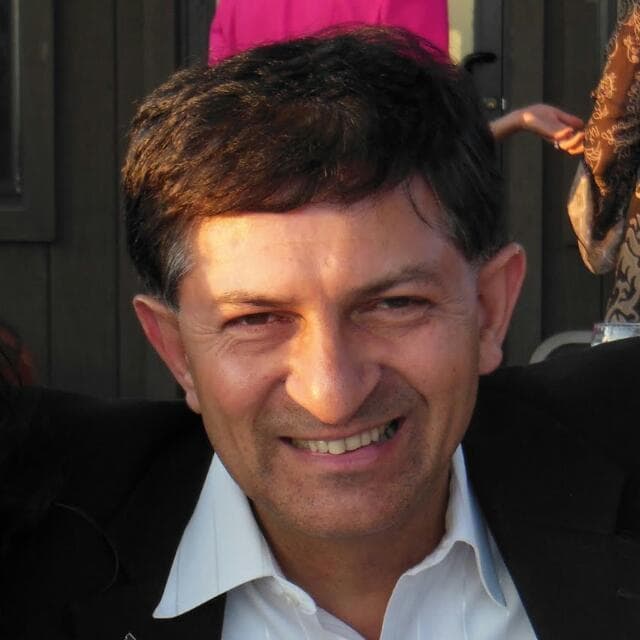
Prof. Giri Narasimhan
Bioinformatics Research Group (BioRG),
Florida International University
Bioinformatics Research Group (BioRG),
Florida International University
Brief Speaker Bio:
Giri Narasimhan a professor in the School of Computing and Information Sciences at Florida International University (FIU), where he heads the Bioinformatics Research Group (BioRG). He holds a Bachelor’s degree in Electrical Engineering from the Indian Institute of Technology-Bombay and a PhD in Computer Science from the University of Wisconsin-Madison. His interdisciplinary research involves problems from the fields of Algorithms, Bioinformatics, Biotechnology, Data Mining, Machine Learning, Theoretical Computer Science, Graph Theory, Optimization, High Performance Computing, Computational Finance and Statistics. His research has been funded by the National Science Foundation, the National Institutes of Health, National Institute of Justice, Florida Department of Health, Department of Defense and private industry. He has published one monograph, two edited volumes, and over 140 refereed articles in books, journals, and conference proceedings. He is the coach of the FIU Programming Team and is a Co-Director of the Ultimate Software Academy for Teaching and outreach at FIU. As the Associate Dean for Research and Graduate Studies in the College of Engineering and Computing during 2009-15 he managed the research portfolio of the college and oversaw the graduate programs in the college.
WebPage: http://www.cs.fiu.edu/~giri
Research Group: http://www.cs.fiu.edu/~giri
Title of Talk
War Stories from the Bioinformatics Front
Widely accepted criteria routinely misdiagnose autoimmune diseases such as Systemic Lupus Erythematosus (SLE) and Mixed Connective Tissue Disease (MCTD). To make matters worse, these criteria fail to differentiate between these two similar diseases. We show how to achieve better accuracies on this front.
Glimpses into microbial communities reveal a diverse, dynamic and complex environment where the entities compete for nutrients, generously share functional genes, produce weapons of destruction in the form of toxins, release various metabolites and signaling molecules for sharing and communication, combine forces to fight common enemies, and much more. We discuss challenges in modeling microbiomes as predictive social networks.
Giri Narasimhan a professor in the School of Computing and Information Sciences at Florida International University (FIU), where he heads the Bioinformatics Research Group (BioRG). He holds a Bachelor’s degree in Electrical Engineering from the Indian Institute of Technology-Bombay and a PhD in Computer Science from the University of Wisconsin-Madison. His interdisciplinary research involves problems from the fields of Algorithms, Bioinformatics, Biotechnology, Data Mining, Machine Learning, Theoretical Computer Science, Graph Theory, Optimization, High Performance Computing, Computational Finance and Statistics. His research has been funded by the National Science Foundation, the National Institutes of Health, National Institute of Justice, Florida Department of Health, Department of Defense and private industry. He has published one monograph, two edited volumes, and over 140 refereed articles in books, journals, and conference proceedings. He is the coach of the FIU Programming Team and is a Co-Director of the Ultimate Software Academy for Teaching and outreach at FIU. As the Associate Dean for Research and Graduate Studies in the College of Engineering and Computing during 2009-15 he managed the research portfolio of the college and oversaw the graduate programs in the college.
WebPage: http://www.cs.fiu.edu/~giri
Research Group: http://www.cs.fiu.edu/~giri
Title of Talk
War Stories from the Bioinformatics Front
Widely accepted criteria routinely misdiagnose autoimmune diseases such as Systemic Lupus Erythematosus (SLE) and Mixed Connective Tissue Disease (MCTD). To make matters worse, these criteria fail to differentiate between these two similar diseases. We show how to achieve better accuracies on this front.
Glimpses into microbial communities reveal a diverse, dynamic and complex environment where the entities compete for nutrients, generously share functional genes, produce weapons of destruction in the form of toxins, release various metabolites and signaling molecules for sharing and communication, combine forces to fight common enemies, and much more. We discuss challenges in modeling microbiomes as predictive social networks.
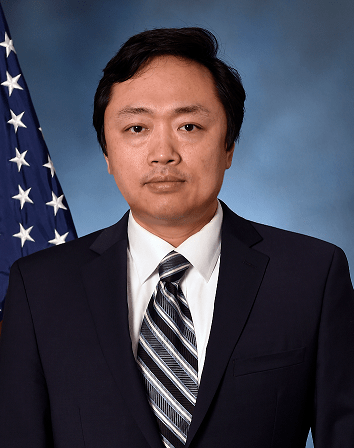
Qing Wu
Brief Speaker Bio:
Qing Wu received the B.S. and M.S. degrees from the Department of Information Science and Electronic Engineering, Zhejiang University, Hangzhou, China, in 1993 and 1995, respectively, and the Ph.D. degree from the Department of Electrical Engineering, University of Southern California, Los Angeles, CA, USA, in 2002. He was an Assistant Professor with the Department of Electrical and Computer Engineering, State University of New York at Binghamton, Binghamton, NY, USA. He is currently a Principal Electronics Engineer with the United States Air Force Research Laboratory, Information Directorate, Rome, NY, USA. He has authored or co-authored over ninety research papers in international journals and conferences. His current research interests include neuromorphic computing architectures, high-performance computing architectures, deep neural networks, and memristor-based neuromorphic circuits and systems. Title of Talk
An Energy-Efficient Embedded Implementation For Target Recognition In SAR Imageries
We present an energy-efficient deep learning model design, training and implementation method for the synthetic aperture radar (SAR) image classification application on a neuromorphic processor. The proposed approach adopts emerging neuromorphic computing models and hardware to achieve significant improvement in computational energy efficiency over deep learning algorithms on conventional embedded processors. A deep convolutional neural network (DCNN) is designed specifically for implementing image classification on the TrueNorth neurosynaptic processor. We have explored the DCNN model design parameters to obtain a comprehensive solution set in the energy-performance trade-off space. Using a SAR image classification dataset, evaluation results show that the proposed design and implementation approach achieves at least 20X reduction in energy-per-image-classification over one of today’s most energy-efficient conventional embedded processors. while achieving a classification accuracy of 95% and a processing throughput of 1,000 images per second.
Qing Wu received the B.S. and M.S. degrees from the Department of Information Science and Electronic Engineering, Zhejiang University, Hangzhou, China, in 1993 and 1995, respectively, and the Ph.D. degree from the Department of Electrical Engineering, University of Southern California, Los Angeles, CA, USA, in 2002. He was an Assistant Professor with the Department of Electrical and Computer Engineering, State University of New York at Binghamton, Binghamton, NY, USA. He is currently a Principal Electronics Engineer with the United States Air Force Research Laboratory, Information Directorate, Rome, NY, USA. He has authored or co-authored over ninety research papers in international journals and conferences. His current research interests include neuromorphic computing architectures, high-performance computing architectures, deep neural networks, and memristor-based neuromorphic circuits and systems. Title of Talk
An Energy-Efficient Embedded Implementation For Target Recognition In SAR Imageries
We present an energy-efficient deep learning model design, training and implementation method for the synthetic aperture radar (SAR) image classification application on a neuromorphic processor. The proposed approach adopts emerging neuromorphic computing models and hardware to achieve significant improvement in computational energy efficiency over deep learning algorithms on conventional embedded processors. A deep convolutional neural network (DCNN) is designed specifically for implementing image classification on the TrueNorth neurosynaptic processor. We have explored the DCNN model design parameters to obtain a comprehensive solution set in the energy-performance trade-off space. Using a SAR image classification dataset, evaluation results show that the proposed design and implementation approach achieves at least 20X reduction in energy-per-image-classification over one of today’s most energy-efficient conventional embedded processors. while achieving a classification accuracy of 95% and a processing throughput of 1,000 images per second.
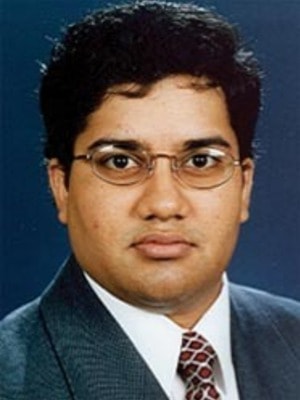
Srinivasan Parthasarathy
The Ohio State University
The Ohio State University
Brief Speaker Bio:
Srinivasan Parthasarathy is a Professor of Computer Science and Engineering and the director of the data mining research laboratory at Ohio State. His research interests span databases, data mining and high performance computing. He is among a handful of researchers nationwide (USA) to have won both the Department of Energy and National Science Foundation Career awards. He and his students have won multiple best paper awards or "best of" nominations from leading forums in the field including: ACM SIGKDD, VLDB, ISMB, WWW, SIAM Data Mining, ICDM, and ACM Bioinformatics. He chairs the SIAM data mining conference steering committee and serves on the action board of ACM TKDD and ACM DMKD --leading journals in the field. Since 2012 he also helped lead the creation of OSU's first-of-a-kind nationwide undergraduate major in data analytics and serves as one of its founding directors. Title of Talk
Scalable Data Analytics: The Role of Stratified Data Sharding
With the increasing popularity of structured data stores, social networks and Web 2.0 and 3.0 applications, complex data formats, such as trees and graphs, are becoming ubiquitous. Managing and processing such large and complex data stores, on modern computational eco-systems, to realize actionable information efficiently, is daunting. In this talk I will begin with discussing some of these challenges. Subsequently I will discuss a critical element at the heart of this challenge relates to the sharding, placement, storage and access of such tera- and peta- scale data. In this work we develop a novel distributed framework to ease the burden on the programmer and propose an agile and intelligent placement service layer as a flexible yet unified means to address this challenge. Central to our framework is the notion of stratification which seeks to initially group structurally (or semantically) similar entities into strata. Subsequently strata are partitioned within this eco-system according to the needs of the application to maximize locality, balance load, minimize data skew or even take into account energy consumption. Results on several real-world applications validate the efficacy and efficiency of our approach. (Notes: Joint work with Y. Wang (Airbnb) and A. Chakrabarti (MSR).
Srinivasan Parthasarathy is a Professor of Computer Science and Engineering and the director of the data mining research laboratory at Ohio State. His research interests span databases, data mining and high performance computing. He is among a handful of researchers nationwide (USA) to have won both the Department of Energy and National Science Foundation Career awards. He and his students have won multiple best paper awards or "best of" nominations from leading forums in the field including: ACM SIGKDD, VLDB, ISMB, WWW, SIAM Data Mining, ICDM, and ACM Bioinformatics. He chairs the SIAM data mining conference steering committee and serves on the action board of ACM TKDD and ACM DMKD --leading journals in the field. Since 2012 he also helped lead the creation of OSU's first-of-a-kind nationwide undergraduate major in data analytics and serves as one of its founding directors. Title of Talk
Scalable Data Analytics: The Role of Stratified Data Sharding
With the increasing popularity of structured data stores, social networks and Web 2.0 and 3.0 applications, complex data formats, such as trees and graphs, are becoming ubiquitous. Managing and processing such large and complex data stores, on modern computational eco-systems, to realize actionable information efficiently, is daunting. In this talk I will begin with discussing some of these challenges. Subsequently I will discuss a critical element at the heart of this challenge relates to the sharding, placement, storage and access of such tera- and peta- scale data. In this work we develop a novel distributed framework to ease the burden on the programmer and propose an agile and intelligent placement service layer as a flexible yet unified means to address this challenge. Central to our framework is the notion of stratification which seeks to initially group structurally (or semantically) similar entities into strata. Subsequently strata are partitioned within this eco-system according to the needs of the application to maximize locality, balance load, minimize data skew or even take into account energy consumption. Results on several real-world applications validate the efficacy and efficiency of our approach. (Notes: Joint work with Y. Wang (Airbnb) and A. Chakrabarti (MSR).
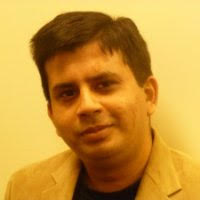
Nishith Pathak
Vice President and R&D
Sr. Principal, Accenture Labs India
Vice President and R&D
Sr. Principal, Accenture Labs India
Brief Speaker Bio :
Nishith Pathak is a Microsoft Most Valuable Professional (MVP), architect, speaker, AI thinker, innovator, and strategist. He is a prolific writer and contributing author and has written many books, articles, reviews, and columns for multiple electronic and print publications, including his last book on AI titled "Artificial Intelligence for .NET". Having 20+ years of experience in IT, Nishith's expertise lies in innovation, research, architecting, designing, and developing applications for Fortune 100 companies using next-generation tools and technologies. As an early adopter of Microsoft technology, he has kept pace in the certification challenges and succeeded in getting several of his certifications in beta stage.
For his expertise on Artificial intelligence, Microsoft have awarded him 1st Most Valuable Professional (MVP) from India on Artificial Intelligence category. Globally, he is among 19 MVPs on AI, recognized by Microsoft for their sheer expertise on AI
Nishith also became gold member and sits on the advisory board of various national and international computer science societies and organizations. He has been awarded the elite Microsoft Most Valuable Professional (MVP) a couple of times for his exemplary work and his expertise in Microsoft technologies. He is a member of various advisory groups for Microsoft. Nishith is currently working as Vice President and R&D lead for Accenture Technology Labs. He is focused on key research areas, specifically Artifcial Intelligence, Machine Learning, cognitive computing, blockchain, Internet of Things, cloud computing, and helping companies architect solutions based on these technologies.
Title of Talk
Using Artificial Intelligence and Machine learning in Enterprise world to resolve social challenge
Artificial Intelligence and Machine learning is been used everywhere. Nishith is going to detailed some of the examples on how machine learning and AI is been used in enterprise world. Social challenges are complex and hard to resolve. Nishith Pathak is going to brief up on how we can use exponential technologies like AI, ML to resolve some of the social challenge, transform the society and make a more inclusive world.
For his expertise on Artificial intelligence, Microsoft have awarded him 1st Most Valuable Professional (MVP) from India on Artificial Intelligence category. Globally, he is among 19 MVPs on AI, recognized by Microsoft for their sheer expertise on AI
Nishith also became gold member and sits on the advisory board of various national and international computer science societies and organizations. He has been awarded the elite Microsoft Most Valuable Professional (MVP) a couple of times for his exemplary work and his expertise in Microsoft technologies. He is a member of various advisory groups for Microsoft. Nishith is currently working as Vice President and R&D lead for Accenture Technology Labs. He is focused on key research areas, specifically Artifcial Intelligence, Machine Learning, cognitive computing, blockchain, Internet of Things, cloud computing, and helping companies architect solutions based on these technologies.
Title of Talk
Using Artificial Intelligence and Machine learning in Enterprise world to resolve social challenge
Artificial Intelligence and Machine learning is been used everywhere. Nishith is going to detailed some of the examples on how machine learning and AI is been used in enterprise world. Social challenges are complex and hard to resolve. Nishith Pathak is going to brief up on how we can use exponential technologies like AI, ML to resolve some of the social challenge, transform the society and make a more inclusive world.
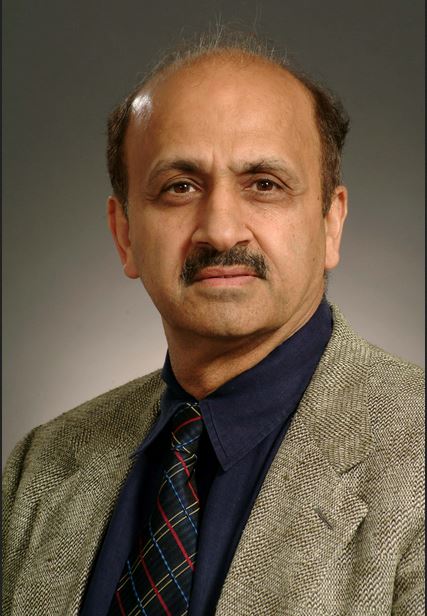
Sartaj K Sahni
Professor
Computer and Information Sciences and Engineering
University of Florida, USA
Professor
Computer and Information Sciences and Engineering
University of Florida, USA
Brief Speaker Bio :
Sartaj Sahni is a Distinguished Professor of Computer and Information Sciences and
Engineering at the University of Florida. He is also a member of the European Academy
of Sciences, a Fellow of IEEE, ACM, AAAS, and Minnesota Supercomputer Institute,
and a Distinguished Alumnus of the Indian Institute of Technology, Kanpur. In 1997, he
was awarded the IEEE Computer Society Taylor L. Booth Education Award ``for
contributions to Computer Science and Engineering education in the areas of data
structures, algorithms, and parallel algorithms'', and in 2003, he was awarded the IEEE
Computer Society W. Wallace McDowell Award ``for contributions to the theory of NP-
hard and NP-complete problems''. Dr. Sahni was awarded the 2003 ACM Karl Karlstrom
Outstanding Educator Award for ``outstanding contributions to computing education
through inspired teaching, development of courses and curricula for distance education,
contributions to professional societies, and authoring significant textbooks in several
areas including discrete mathematics, data structures, algorithms, and parallel and
distributed computing.'' Dr. Sahni has published over three hundred research papers and
written 15 texts. His research publications are on the design and analysis of efficient
algorithms, parallel computing, interconnection networks, design automation, and
medical algorithms. He is presently the Editor-in- Chief of ACM Computing Surveys.
Title of Talk
Time & Energy Efficient Computing
Traditionally, the performance of an application has been measured by its time and memory requirements. More recently, there has been interest in a third performance metric—energy. This talk will begin by motivating the consideration of energy as a metric and then focus on two areas—data centers and big data computations—where both time to completion and energy consumption are important metrics. For data centers, we review some of our recent work in optimizing data center network topology in support of long running data aggregations and, for big data computations, we demonstrate significant time and energy improvements for large scale sequence alignment and RNA folding by enhancing the cache utilization of classical algorithms.
Title of Talk
Time & Energy Efficient Computing
Traditionally, the performance of an application has been measured by its time and memory requirements. More recently, there has been interest in a third performance metric—energy. This talk will begin by motivating the consideration of energy as a metric and then focus on two areas—data centers and big data computations—where both time to completion and energy consumption are important metrics. For data centers, we review some of our recent work in optimizing data center network topology in support of long running data aggregations and, for big data computations, we demonstrate significant time and energy improvements for large scale sequence alignment and RNA folding by enhancing the cache utilization of classical algorithms.
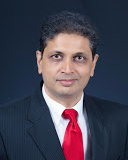
Sanjay Ranka, Ph.D.
Professor, Fellow IEEE, Fellow AAAS
Department of Computer Science and Engineering
University of Florida
Professor, Fellow IEEE, Fellow AAAS
Department of Computer Science and Engineering
University of Florida
Brief Speaker Bio :
Sanjay Ranka is a Professor in the Department of Computer Information Science and Engineering at University of Florida. His current research interests are high performance and parallel computing with a focus on energy efficiency; and big data science with a focus on data mining/machine learning algorithms for spatiotemporal applications. His work is driven by applications in CFD, remote sensing, health care and transportation. He teaches courses on data science (three course curriculum), data mining and parallel computing.
From 1999-2002, he was the Chief Technology Officer at Paramark (Sunnyvale, CA). At Paramark, he developed a real-time optimization service called PILOT for marketing campaigns. PILOT served more than 10 million optimized decisions a day in 2002 with a 99.99% uptime. Paramark was recognized by VentureWire/Technologic Partners as a top 100 Internet technology company in 2001 and 2002 and was acquired in 2002. He has also held positions as a tenured faculty positions at Syracuse University and as a researcher/visitor at IBM T.J. Watson Research Labs and Hitachi America Limited.
Sanjay earned his Ph.D. (Computer Science) from the University of Minnesota and a B. Tech. in Computer Science from IIT, Kanpur, India. He has coauthored four books, 250+ journal and refereed conference articles. His recent co-authored work has received a best student paper runner up award at IGARSS 2015, best paper award at BICOB 2014, best student paper award at ACM-BCB 2010, best paper runner up award at KDD-2009, a nomination for the Robbins Prize for the best paper in journal of Physics in Medicine and Biology for 2008, and a best paper award at ICN 2007.
He is a fellow of the IEEE and AAAS, and a past member of IFIP Committee on System Modeling and Optimization. He is an associate Editor-in-Chief of the Journal of Parallel and Distributed Computing and an associate editor for ACM Computing Surveys, IEEE/ACM Transactions on Computational Biology and Bioinformatics, Sustainable Computing: Systems and Informatics, Knowledge and Information Systems, and International Journal of Computing. Additionally, he is a book series editor for CRC Press for Bigdata. In the past, he has been an associate editor for IEEE Transactions on Parallel and Distributed Systems and IEEE Transactions on Computers.
He was a past member of the IFIP Committee on System Modeling and Optimization, Parallel Compiler Runtime Consortium, the Message Passing Initiative Standards Committee and Technical Committee on Parallel Processing. He is the program chair for 2015 High Performance Computing, 2013 International Parallel and Distributed Processing Symposium, 2010 International Conference on Contemporary Computing and co-general chair for 2009 International Conference on Data Mining and 2010 International Conference on Green Computing.
Sanjay has had consulting assignments with a number of companies (AT&T Wireless, IBM, Hitachi) and has served as an expert witness in patent disputes. He is a series editor for CRC press on Bigdata. His work has received 9600+ citations with an h-index of 48 (based on Google Scholar).
Title of Talk
Smart Intersection Control Algorithms for Automated and Connected Vehicles
The pace at which autonomous and connected vehicle technology is reaching the consumer market is accelerating. These driver and driverless vehicles will communicate information with other vehicles and transportation infrastructure. In this talk, we will present our work on optimizing signal control to take advantage of these developments. We will provide extensive simulation results as well as our initial testing of our algorithms On Traffic Engineering Research Laboratory (TERL) in Tallahassee, Florida.
We will also describe related projects on I-STREET (Implementing Solutions from Transportation Research and Evaluation of Emerging Technologies) that University of Florida is developing in conjunction with the Florida Department of Transportation and the City of Gainesville. This testbed will encompass the University of Florida campus and the surrounding roadway network in the City of Gainesville.
From 1999-2002, he was the Chief Technology Officer at Paramark (Sunnyvale, CA). At Paramark, he developed a real-time optimization service called PILOT for marketing campaigns. PILOT served more than 10 million optimized decisions a day in 2002 with a 99.99% uptime. Paramark was recognized by VentureWire/Technologic Partners as a top 100 Internet technology company in 2001 and 2002 and was acquired in 2002. He has also held positions as a tenured faculty positions at Syracuse University and as a researcher/visitor at IBM T.J. Watson Research Labs and Hitachi America Limited.
Sanjay earned his Ph.D. (Computer Science) from the University of Minnesota and a B. Tech. in Computer Science from IIT, Kanpur, India. He has coauthored four books, 250+ journal and refereed conference articles. His recent co-authored work has received a best student paper runner up award at IGARSS 2015, best paper award at BICOB 2014, best student paper award at ACM-BCB 2010, best paper runner up award at KDD-2009, a nomination for the Robbins Prize for the best paper in journal of Physics in Medicine and Biology for 2008, and a best paper award at ICN 2007.
He is a fellow of the IEEE and AAAS, and a past member of IFIP Committee on System Modeling and Optimization. He is an associate Editor-in-Chief of the Journal of Parallel and Distributed Computing and an associate editor for ACM Computing Surveys, IEEE/ACM Transactions on Computational Biology and Bioinformatics, Sustainable Computing: Systems and Informatics, Knowledge and Information Systems, and International Journal of Computing. Additionally, he is a book series editor for CRC Press for Bigdata. In the past, he has been an associate editor for IEEE Transactions on Parallel and Distributed Systems and IEEE Transactions on Computers.
He was a past member of the IFIP Committee on System Modeling and Optimization, Parallel Compiler Runtime Consortium, the Message Passing Initiative Standards Committee and Technical Committee on Parallel Processing. He is the program chair for 2015 High Performance Computing, 2013 International Parallel and Distributed Processing Symposium, 2010 International Conference on Contemporary Computing and co-general chair for 2009 International Conference on Data Mining and 2010 International Conference on Green Computing.
Sanjay has had consulting assignments with a number of companies (AT&T Wireless, IBM, Hitachi) and has served as an expert witness in patent disputes. He is a series editor for CRC press on Bigdata. His work has received 9600+ citations with an h-index of 48 (based on Google Scholar).
Title of Talk
Smart Intersection Control Algorithms for Automated and Connected Vehicles
The pace at which autonomous and connected vehicle technology is reaching the consumer market is accelerating. These driver and driverless vehicles will communicate information with other vehicles and transportation infrastructure. In this talk, we will present our work on optimizing signal control to take advantage of these developments. We will provide extensive simulation results as well as our initial testing of our algorithms On Traffic Engineering Research Laboratory (TERL) in Tallahassee, Florida.
We will also describe related projects on I-STREET (Implementing Solutions from Transportation Research and Evaluation of Emerging Technologies) that University of Florida is developing in conjunction with the Florida Department of Transportation and the City of Gainesville. This testbed will encompass the University of Florida campus and the surrounding roadway network in the City of Gainesville.
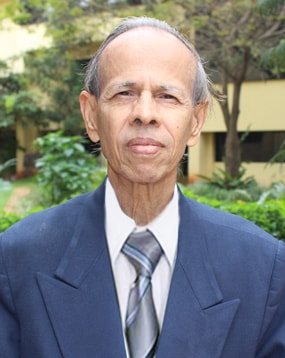
PROF. S.CHANDRASEKHAR
Senior Prof & Director Business Analytic
IFIM Business School B "lore
Senior Prof & Director Business Analytic
IFIM Business School B "lore
Brief Speaker Bio :
Prof S Chandrasekhar is Senior Prof & Director Business Analytic at IFIM Business School B “Lore since Nov 2013. He has about 40+ years of experience in Industry & academics out of which about 15+ years in Analytics.
He was chair Professor (July 1998-Feb 2013) & Director at FORE School of Management, New Delhi Prior to this he worked at Indian Institute of Management, Lucknow for about ten years(1988-98) as Professor in the area of Computers & information Systems. Area Chair Quantitative Group & Information Systems, Member Secretary of IIM L Governing Board for about three years.
Title of Talk
Credit rating of financial instruments
The credit rating of financial instruments is one of the factors that play a significant role while making investment decisions. Credit rating companies provide information about the credit stability/ transitions (deterioration/ up gradation) of the debt instruments using financial parameters, industry parameters, and external environment at quarterly intervals. In the present scenario, investment managers have to wait for quite some time to know about the credit rating stability/ transition. We propose that incorporating the market news available from different sources in almost real time along with the usual financial parameters should be able to predict the rating stability/ transition well in advance. The present work focus on incorporating sentiment scores extracted from various news sources like new aggregators like Bloomberg, Reuters, Company Web sites, Blogs etc. Depending upon the source of news a weight will be given taking into consideration trust worthiness of the source, Location of the Company information in the body of the news, Frequency of appearance. Using deep learning weights are assigned to each source. A Composite Sentiment score is computed as weighed average of the various individual news sources. This composite score is additional Input along with other financial parameters about eleven to survival analysis which in turn will forecast credit events. Our results show that Return on Capital Employed ROCE and Interest cover ratio along with sentiment scores are the best predictor variables to predict the rating stability/ transition. We tested our methodology on about three hundred companies. Most of them are from mining & textile segment as majority of downgrades and rating transitions have happened in those sectors. Back testing results show that proposed model very well predicts the credit rating stability/ transition. Without using the sentiment score and our weighing scheme the prediction accuracy of a transition was about 45% on hold out Samples (About 30 of 300) and with Financial and sentiment score it went up to about 70%. This work will be very helpful from the regulatory point of view also as one has to compute the Future value of Loan portfolio ie Credit Risk VAR. This method computes the Credit Risk VAR much accurately compared to existing methods of Credit Risk Computation.
He was chair Professor (July 1998-Feb 2013) & Director at FORE School of Management, New Delhi Prior to this he worked at Indian Institute of Management, Lucknow for about ten years(1988-98) as Professor in the area of Computers & information Systems. Area Chair Quantitative Group & Information Systems, Member Secretary of IIM L Governing Board for about three years.
He holds a Bachelor’s degree in Electrical Engineering, Master’s degree in Computer Science from IIT, Kanpur and Doctorate in Quantitative &Information Systems from University of Georgia, USA. Worked in India, USA and Canada in reputed organizations like TIFR, ISRO, NRSA, FORD Aerospace Corporation, National Research Council before joining IIM, Lucknow. Awarded UNDP fellowship for study in Advanced Computer Systems design. Worked in the area of Neural Network, Forecasting using Statistical Techniques, Mathematical Modeling, and Data Warehousing/Data Mining.
Title of Talk
Credit rating of financial instruments
The credit rating of financial instruments is one of the factors that play a significant role while making investment decisions. Credit rating companies provide information about the credit stability/ transitions (deterioration/ up gradation) of the debt instruments using financial parameters, industry parameters, and external environment at quarterly intervals. In the present scenario, investment managers have to wait for quite some time to know about the credit rating stability/ transition. We propose that incorporating the market news available from different sources in almost real time along with the usual financial parameters should be able to predict the rating stability/ transition well in advance. The present work focus on incorporating sentiment scores extracted from various news sources like new aggregators like Bloomberg, Reuters, Company Web sites, Blogs etc. Depending upon the source of news a weight will be given taking into consideration trust worthiness of the source, Location of the Company information in the body of the news, Frequency of appearance. Using deep learning weights are assigned to each source. A Composite Sentiment score is computed as weighed average of the various individual news sources. This composite score is additional Input along with other financial parameters about eleven to survival analysis which in turn will forecast credit events. Our results show that Return on Capital Employed ROCE and Interest cover ratio along with sentiment scores are the best predictor variables to predict the rating stability/ transition. We tested our methodology on about three hundred companies. Most of them are from mining & textile segment as majority of downgrades and rating transitions have happened in those sectors. Back testing results show that proposed model very well predicts the credit rating stability/ transition. Without using the sentiment score and our weighing scheme the prediction accuracy of a transition was about 45% on hold out Samples (About 30 of 300) and with Financial and sentiment score it went up to about 70%. This work will be very helpful from the regulatory point of view also as one has to compute the Future value of Loan portfolio ie Credit Risk VAR. This method computes the Credit Risk VAR much accurately compared to existing methods of Credit Risk Computation.
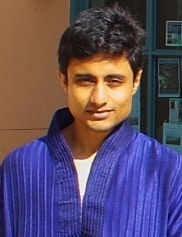
Sayan Ranu
Assistant Professor
CSE department
IIT Delhi
Assistant Professor
CSE department
IIT Delhi
Brief Speaker Bio :
He is an Assistant Professor in the CSE department at IIT Delhi. His research interests span the broad area of data analytics with particular focus on graph indexing and mining, social network analysis, querying and mining spatio-temporal data, and bioinformatics. The tag-cloud of my paper abstracts provides an accurate representation of my research interests.
He graduated from the Computer Science department of University of California, Santa Barbara in March, 2012. Prior to joining IIT D, He worked as Assistant Professor at IIT Madras for close to three years and at IBM Research, Bangalore for a year and a half.
Title of Talk
ReactionMiner: Predicting novel metabolic pathways through subgraph mining
Chemical reactions are not random events. Two molecules react if they satisfy certain constraints, which are often structural in nature. Can we learn these structural constraints and predict the chain of reactions required to synthesize molecule B from A? The ability to predict chemical pathways between molecules is critical for several applications such as optimizing chemical manufacturing cost, understanding the functioning of enzymes, discovering novel pathways to synthesize molecules of interest and synthetic biology. In this talk, we will present a fully automated system to predict chemical pathways between molecules. We achieve this task by representing chemical molecules as graphs. Through a graph-based analysis of molecular structures, we mine the structural patterns required for a reaction to proceed. The problem of predicting pathways between two molecules is difficult because of the exponential search space that needs to be explored. By representing the chemical pathway space using subgraph patterns, we capture an abstract representation of all possibilities in the form of a reaction network and consequently, are able to efficiently predict pathways between molecules that we have never seen before. We demonstrate that our prediction algorithm can scale to thousands of reactions and answer queries in seconds. We perform extensive experiments on the largest publicly available reaction database to validate the accuracy of our predictions. The results indicate an accuracy beyond 80 % and a querying time of less than a minute. Furthermore, we conduct qualitative experiments to show that our algorithm performs consistently well in identifying naturally occurring pathways that appear within cells of living organisms.
He graduated from the Computer Science department of University of California, Santa Barbara in March, 2012. Prior to joining IIT D, He worked as Assistant Professor at IIT Madras for close to three years and at IBM Research, Bangalore for a year and a half.
Title of Talk
ReactionMiner: Predicting novel metabolic pathways through subgraph mining
Chemical reactions are not random events. Two molecules react if they satisfy certain constraints, which are often structural in nature. Can we learn these structural constraints and predict the chain of reactions required to synthesize molecule B from A? The ability to predict chemical pathways between molecules is critical for several applications such as optimizing chemical manufacturing cost, understanding the functioning of enzymes, discovering novel pathways to synthesize molecules of interest and synthetic biology. In this talk, we will present a fully automated system to predict chemical pathways between molecules. We achieve this task by representing chemical molecules as graphs. Through a graph-based analysis of molecular structures, we mine the structural patterns required for a reaction to proceed. The problem of predicting pathways between two molecules is difficult because of the exponential search space that needs to be explored. By representing the chemical pathway space using subgraph patterns, we capture an abstract representation of all possibilities in the form of a reaction network and consequently, are able to efficiently predict pathways between molecules that we have never seen before. We demonstrate that our prediction algorithm can scale to thousands of reactions and answer queries in seconds. We perform extensive experiments on the largest publicly available reaction database to validate the accuracy of our predictions. The results indicate an accuracy beyond 80 % and a querying time of less than a minute. Furthermore, we conduct qualitative experiments to show that our algorithm performs consistently well in identifying naturally occurring pathways that appear within cells of living organisms.
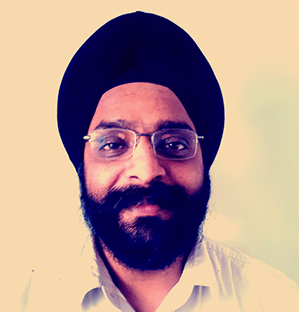
Ramandeep Singh
CEO - QOS Technology
CEO - QOS Technology
Brief Speaker Bio :
Ramandeep Singh, is CEO of QOS Technology, a cyber security Products and Services company. The company has recorded sustainable and growing profits for last 3 years consistently, while bootstrapping 7 years ago. He had overseen the growth of their R&D team, which had launched a global award winning product for security analytics with 1500+ active customers and other couple of products on Security Orchestration and Threat Intelligence. The focus of company is to build the customer centric solutions by virtue of services and products, in context of security and analytics, where Quality is key attribute. He has been instrumental in pushing applied mathematics and machine learning models in their products. Taking the mission further from the learnings thru' little bets in last 3 years, he along with his co-founders recently launched, Research Incubator and Training Labs in Bengaluru for cyber security analytics, called PurpleSynapz™ in Oct 2017 . He is pursuing GMP from The Wharton School, and holds a B.Tech. degree in Electronics & Communication Engg. from SLIET, Longowal.
Title of Talk
Machine Learning in Security Analytics
The use case is based on the problem statement that despite well defined security operations centres (SOC) and SIEM tools, still the cyber breaches go either undetected or unresponded, as a function of time. The battle against evolving landscape of cyber attacks, can possibly be won by working on a non-linear equation with an empirical formula TD (Time to detect an attack) + TR (Time to respond an attack) < TA (Time for an attack to thrive), whilst the attackers have the asymmetric advantage of the first move and well orchestrated planning.
When we started working on the solution the biggest challenge was the dimensionality of the problem statement. The feature space for the desired solution was complex and highly qualitative when attack patterns are categorised into (a) known knowns, (b) known unknowns, and (c) unknown unknowns. As the Detection of Attack, is completely machine based therefore building solutions around TD was not as fuzzy as that was in case of TR, as the Response to Attack involves a fair amount of human role. The human factor brings in the challenges of language, expressions, efficiency, effectiveness as a function of 24x7, competencies, exposure, situational context, etc. while working on the attack response(s) on the fly at the time of real attack propagation. This brought us to include the machine support function and statistical correlation models into our product facilitating SOC operators to take swift & consistent actions in the event of the attack propagation. Solving this puzzle is a work in progress the accuracies are average, while we are consistently improving results in last 6 months. Though we are still building on a comprehensive machine model for the Response to Attack phase with deep learning models, alternatively to avoid product release delays, we included the mathematical computations that involve the collaborative consensus model to arrive at a risk score for every potential Indicator of Attack (IOA). The Risk Score above 8 on the scale of 10 has achieved 92% accuracy and is used for automatic block actions by most of our customers. We have integrated the Threat Hunting workflows to ease the SOC operators for the IOA that are having score less than 8, while we are working on improving various dimensions of the product.
Title of Talk
Machine Learning in Security Analytics
The use case is based on the problem statement that despite well defined security operations centres (SOC) and SIEM tools, still the cyber breaches go either undetected or unresponded, as a function of time. The battle against evolving landscape of cyber attacks, can possibly be won by working on a non-linear equation with an empirical formula TD (Time to detect an attack) + TR (Time to respond an attack) < TA (Time for an attack to thrive), whilst the attackers have the asymmetric advantage of the first move and well orchestrated planning.
When we started working on the solution the biggest challenge was the dimensionality of the problem statement. The feature space for the desired solution was complex and highly qualitative when attack patterns are categorised into (a) known knowns, (b) known unknowns, and (c) unknown unknowns. As the Detection of Attack, is completely machine based therefore building solutions around TD was not as fuzzy as that was in case of TR, as the Response to Attack involves a fair amount of human role. The human factor brings in the challenges of language, expressions, efficiency, effectiveness as a function of 24x7, competencies, exposure, situational context, etc. while working on the attack response(s) on the fly at the time of real attack propagation. This brought us to include the machine support function and statistical correlation models into our product facilitating SOC operators to take swift & consistent actions in the event of the attack propagation. Solving this puzzle is a work in progress the accuracies are average, while we are consistently improving results in last 6 months. Though we are still building on a comprehensive machine model for the Response to Attack phase with deep learning models, alternatively to avoid product release delays, we included the mathematical computations that involve the collaborative consensus model to arrive at a risk score for every potential Indicator of Attack (IOA). The Risk Score above 8 on the scale of 10 has achieved 92% accuracy and is used for automatic block actions by most of our customers. We have integrated the Threat Hunting workflows to ease the SOC operators for the IOA that are having score less than 8, while we are working on improving various dimensions of the product.

Dr. Deepak Garg
Head, Computer Science and Engineering,
Bennett University,
Times Group,
Greater Noida
Head, Computer Science and Engineering,
Bennett University,
Times Group,
Greater Noida
Brief Speaker Bio :
Dr. Garg is considered as one of the Algorithm Gurus in India. He is a chief consultant for algorithmguru.com, a resource for algorithms. He has done his Ph.D. in the area of efficient algorithm design. His active research interests are designing efficient machine learning algorithms and knowledge management. He is Senior Member of IEEE, USA, Senior Member of ACM,UK. He has been chair of IEEE Computer Society, India Council. He has been on the Board of governors of IEEE Education Society, USA. He started his career as a Software Engineer in IBM Corporation Southbury, CT, USA. He has taught important core subjects at graduate and undergraduate levels and has guided 10 PhD Students. He has handled research projects of around three crores sponsored by Govt of India. He has successfully organized 19 short-term courses on latest technologies includingnablement Programme. Deepak has 100+ publications in various International Journals and conferences. He has 19 years of teaching/research/development experience. He is passionate about transforming the landscape of Indian Engineering Education and a leader in MOOC initiatives of India.
For details please visit http://www.gdeepak.com
Title of Talk
Research at computer science department
Dr. Garg will talk about the research activites being done at Computer Science Engineering Department at Bennett University. He will showcase that how we are taking leadership position in India for Deep Learnkng research in India. Department is privileged to have first NVIDIA DGX-1 V100 supercomputing facility in India for handling data and application that require massive computing power. He will elaborate about some interesting opportunities to collaborate and network.
For details please visit http://www.gdeepak.com
Title of Talk
Research at computer science department
Dr. Garg will talk about the research activites being done at Computer Science Engineering Department at Bennett University. He will showcase that how we are taking leadership position in India for Deep Learnkng research in India. Department is privileged to have first NVIDIA DGX-1 V100 supercomputing facility in India for handling data and application that require massive computing power. He will elaborate about some interesting opportunities to collaborate and network.
